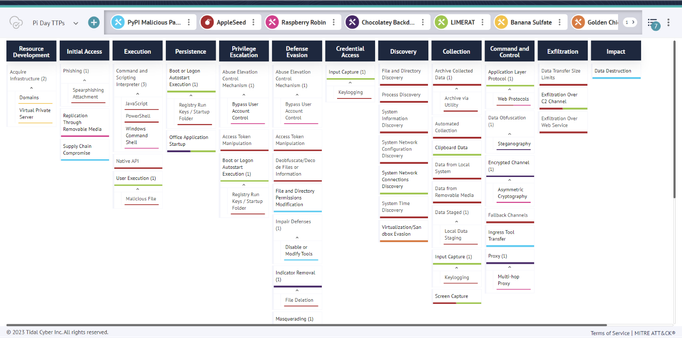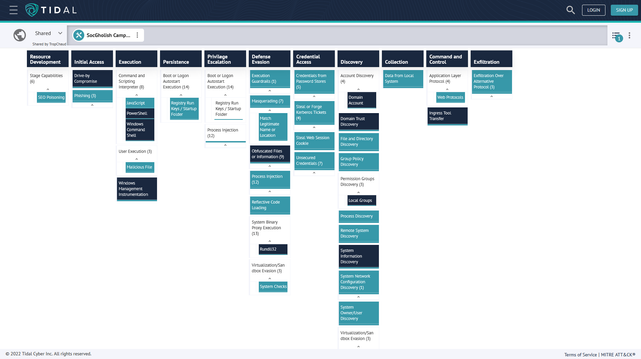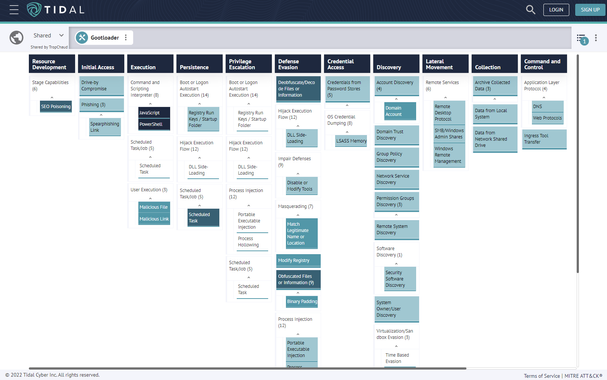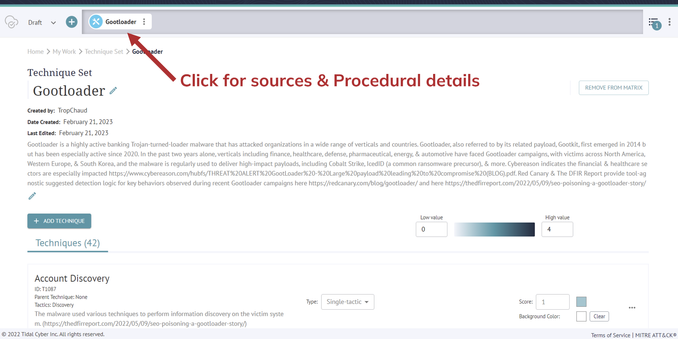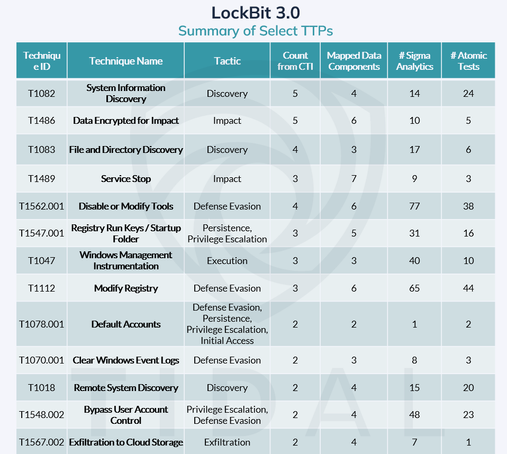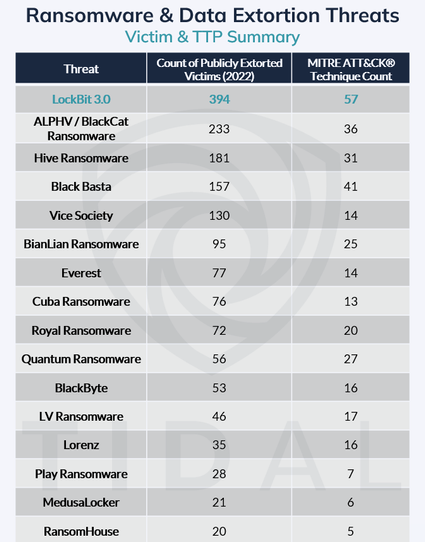Introducing the newest major @tidalcyber TTP intelligence content roundup, the Initial Access & Malware Delivery Landscape matrix, now live in our free Community Edition platform: https://app.tidalcyber.com/share/43836024-a194-4ac7-9659-b51e88632e7f
The matrix covers 25 major & emerging #malware typically used to gain early footholds in victim environments, often leading to ingress of more impactful threats, especially #ransomware, #infostealers, cryptominers, & more. It includes many recognizable names (#QakBot, #IcedID, #Emotet, #Bumblebee, #Gootloader) plus several newer and less-discussed threats
The matrix includes 13 custom Technique Sets for threats not currently tracked in the #mitreattack knowledge base. All technique references derive from a large volume of recent, public #threat reporting (click the labels in the ribbon at the top of the matrix to view relevant source URLs for each threat)
An interactive link analysis visualization of connections among these threats, also derived from public reports, is also available here: https://onodo.org/visualizations/235067/
Community Edition matrices support easy identification of shared (and outlier) techniques among multiple threats, and quick & easy overlay or pivoting to defensive & offensive security capabilities relevant to your own #security stack. We’ll have a blog out soon reviewing our analysis of top & trending techniques common among these initial access threats
Tidal’s #Adversary Intelligence team remains focused on providing up-to-date #TTPintelligence, especially around traditionally under-represented yet widely relevant threats like crimeware. Other popular matrices in this theme include our Ransomware & Data Extortion Landscape matrix (https://app.tidalcyber.com/share/9a0fd4e6-1daf-4f98-a91d-b73003eb2d6a) and Major & Emerging Infostealers matrix (https://app.tidalcyber.com/share/ec62f5e0-bd40-476b-a560-7ad2779ea9e3), which each cover 20+ threats
Financially motivated adversaries often display a rapid pace of #TTP evolution, and this is especially apparent for #initialaccess threats. Register for our webinar on May 31 dedicated to TTP evolution, its drivers, and discussion around what defenders can do to address it and its implications: https://hubs.la/Q01NC23k0
#SharedWithTidal #threatinformeddefense #malware #infostealer #cryptominer #IAB #blueteam #detectionengineering #purpleteam #cyber
